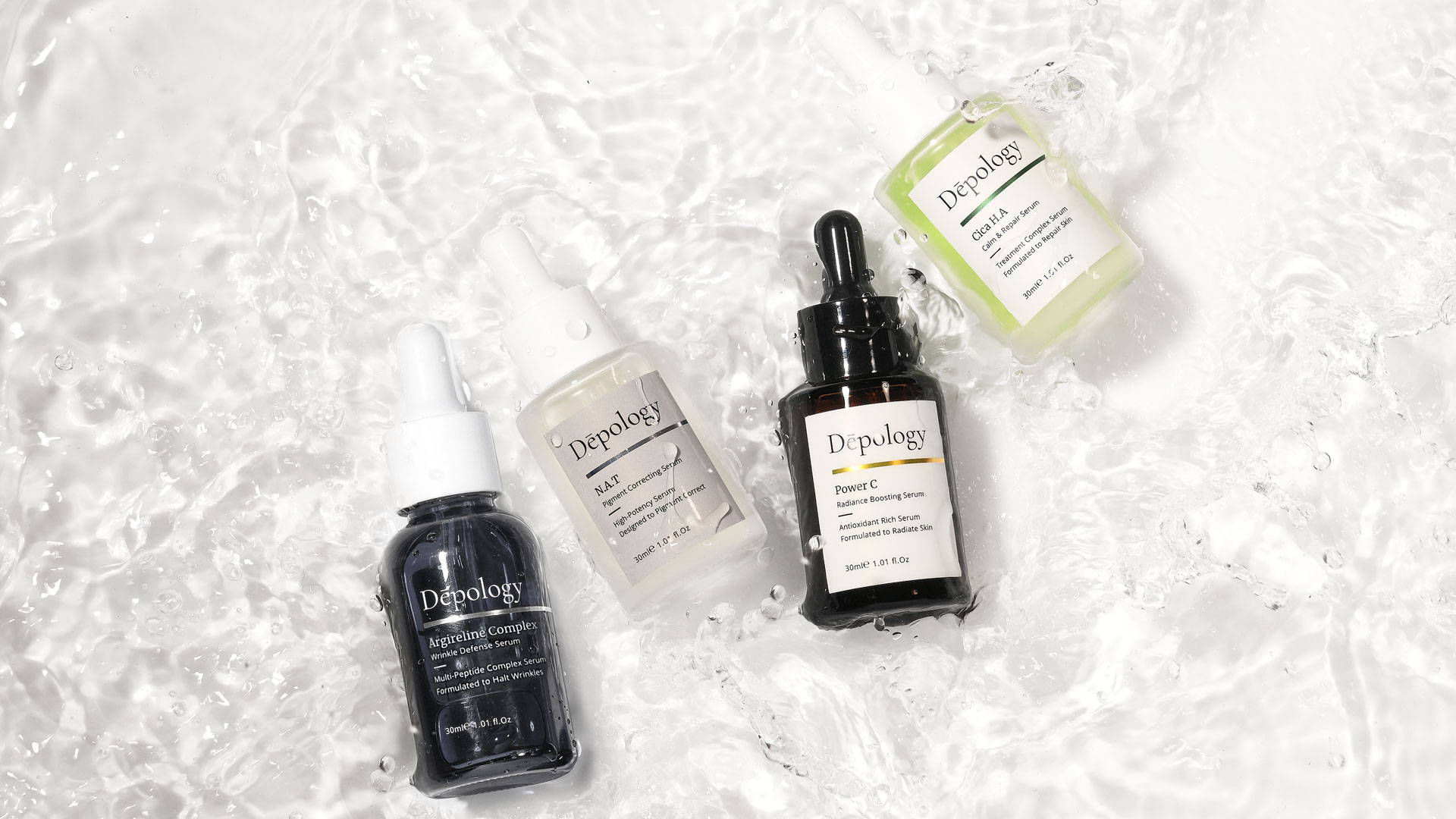
Different Types of Acids For Your Skin
Intro
When one hears the word, “acid,” immediately it’s a negative connotation. We tend to think of all the bad effects of acids rather than the benefits that certain acids have. This even applies to skincare, as there are multiple types of acid ingredients in products that serve different purposes, depending on a person’s skin type or condition.
Incorporating essential acids and being aware of their positive contributions to your skincare routine is highly recommended to ensure you are getting the most out of your daily efforts to prevent aging signs and encourage skin health.
Acid Categories
Before diving into the specifics of sub-acid categories, it’s helpful to know which main department each falls into, so you know which type you should be searching for regarding your skincare regimen.
AHAs
The first primary acid of the trio to be commonly found in skincare products is AHAs (alpha-hydroxy acids). These water-soluble molecules are helpful for improving moisture and exfoliating the skin by breaking down skin cells. Naturally found and utilized from sugar cane, milk, and fruits, these acids also benefit users with mild hyperpigmentation and aging signs.
BHAs
Acquired from trees such as willow bark and birch, beta-hydroxy acids are oil-soluble molecules. These molecules penetrate deeper than AHAs and are known for their anti-inflammatory and anti-bacterial contributions to the skin.
Salicin, a compound found in willow bark trees, is primarily used to create salicylic acid. This compound, combined with oil-soluble acids, is highly recommended for helping those with redness, inflammation, and even acne breakouts.
PHAs
The final acids of the trio are polyhydroxy acids, also referred to as “the second generation of AHAs.” These large, water-soluble molecules are gentler than AHAs, providing milder exfoliation in the process. Due to their large size, they are not able to penetrate very deep into the skin. They are recommended for those with sensitive skin due to their effect at remaining near the surface of the skin, as well as their antioxidant properties.
Types of Acids
Now that you’re an expert in the different types of acids, you’re closer to understanding the full effect that each of the sub-categories of acids has on your routine, both positive and negative, and all depending on the individual. You should always consult with a skincare professional and test products on small patches of skin if you’re unsure of how your body will react to a particular product.
Ascorbic Acid
A water-soluble antioxidant, ascorbic acid is commonly called “vitamin C,” due to its powerful skin protection from the sun and environmental factors. Aside from an extra layer of protection for your daily routines, this acid is also known to help stimulate collagen and inhibits the production of pigments from causing dark spots on the skin.
Much like vitamin C serum or other products containing vitamin C as a core ingredient, it’s best to keep these products in a dry, lock-tight container that isn’t exposed to light. Over time, if repeatedly exposed, it can cause the product to become unstable and not work as intended.
Recommended Depology product:

Power C Antioxidant Radiance Boosting Serum
By just applying once per day, Depology’s specially-formulated Power C serum tackles dark spots and aging signs, stopping them from preventing further damage or coming back in the future. Refreshing and nourishing, your skin will feel reborn after experiencing external agents throughout the day and will ultimately appear brighter and firmer. Containing both vitamin C and ferulic acid as core ingredients, results will be nearly instantaneous when incorporating this serum into your daily routine.
Azelaic Acid
This acid is particularly special, as it naturally occurs within the skin and is not placed in a direct category, in terms of it being an AHA, BHA, or PHA. Derived from yeast, this acid is a great exfoliator and targets dark spots. It has even been found to help treat melasma, a skin condition in which dark patches appear on the skin. These dark areas are often caused by prolonged skin exposure to sunlight and can also occur during pregnancy.
Azelaic acid is meant to halt pigment production in the skin by inhibiting the enzyme, tyrosinase, from producing further melanin, a main substance in the body that is responsible for skin pigmentation. This decreased formation of pigments allows for the skin to return to its natural color, resolving affected areas from the sun, melasma, and other conditions such as rosacea due to its anti-inflammatory properties.
Ellagic Acid
Another unique acid that may be found in your ingredients is ellagic acid. Usually derived from pomegranate, berries, and varieties of nuts, ellagic acid contains skin-brightening properties, similar to azelaic acid. It is often combined with salicylic acid to help treat hyperpigmentation, so in this case, acids working together is nothing to be afraid of.
This acid is known to have some side effects, such as skin dryness or irritation. If you notice any issues or occurrences on your skin that aren’t normal when using this ingredient, you should stop using the product immediately. That goes for the other acids on this list as well.
Ferulic Acid
Ferulic acid has been getting a lot of attention over the years due to its common pairing with vitamin C. This naturally-occurring AHA compound in the body works with vitamin C to stabilize said ingredient, making it more effective when applied. Ferulic acid is most definitely the main character of its story and is highly encouraged to pair with ferulic acid.
When antioxidants come into contact with free radicals and environmental factors, they undergo a chemical reaction called oxidization, which adds oxygen to the compound in exchange for the loss of electrons. During this process, ferulic acid has been known to help with the protection of collagen in the skin and elastin structures, as well as reducing further pigment production.
Glycolic Acid
One of the smallest and most well-studied AHAs, glycolic acid is acquired through sugar cane sources and is found in numerous products, including cleansers, serums, and moisturizers. By penetrating the outermost layer of the skin, this acid increases skin cell turnover. Considered versatile when it comes to skincare benefits, it’s known to be an effective exfoliator, treat acne breakouts and hyperpigmentation, and lessen the effects of aging.
Glycolic acid is often best left on the skin, as it is most effective in lotions or over a cleanser that contains glycolic acid. This way, the acid can be properly absorbed and the user can reap all its benefits. By being able to lessen steps in your routine with this ingredient, you’re saving time while ensuring healthy skin.
Hyaluronic Acid
Another natural component in the skin, hyaluronic acid draws water from the environment, making it a particularly special and useful acid to utilize. It has the capability to trap water up to 1,000 times its weight, locking in moisture and keeping the skin smooth.
Due to its large size, this molecule is not able to penetrate deep below the skin’s surface and therefore isn’t recommended for increasing collagen production. Instead, it works by increasing plumpness in the skin’s outer layer, softening fine lines, and enhancing your skin’s appearance by creating a natural glow.
Recommended Depology product:

Deepcare+ Serum-Infused Micro-Dart Patches
Depology’s one-of-a-kind skincare formulation under the guise of micro-dart patches is composed of vital amino acids and molecules that are naturally occurring in the skin. Constructed with only the healthiest skin in mind in the heart of one of the most prominent skincare industries in the world, South Korea, the serum-infused treatment promotes skin self-protection and nourishment, ensuring your skin won’t be a concern in the future, as long as they are utilized every few days! These hyaluronic acid patches are most recommended to apply overnight, waking up with fresh skin, and are fitted for all skin types.
Kojic Acid
An AHA, kojic acid is derived from foods such as soy sauce and Japanese sake during rice fermentation. It can also be produced by the process of fungus fermentation. While not as effective as hydroquinone, often used as a skin-lightening agent, this acid remains most commonly used for inhibiting melanin production and brightening the skin, removing the potential for dark patches to form.
Lactic Acid
Switching out the fermented sake for milk, lactic acid is the only AHA that provides both moisturizing and exfoliant properties. Why do you think Egyptian royals such as Cleopatra adored their sour milk baths?
This acid tends to work on the milder side, hydrating the skin almost instantaneously when applied. Since it is gentler on the skin, it’s often used over the body rather than solely on the face. Body lotions containing lactic acid as a core ingredient work to treat a variety of skincare concerns such as flaky and dry skin.
Mandelic Acid
Unlike glycolic acid, mandelic acids are larger AHAs, commonly derived from almond extracts. This acid works to slowly penetrate the skin, providing gentle exfoliation in the process. Mandelic acid is by far less irritating than other acids and is recommended for those with sensitive skin. Those who are looking to reduce aging signs that have oilier skin will also see many benefits from using this acid on a regular basis, at least two times per day.
Phytic Acid
This AHA contains powerful antioxidant properties and is sourced from vegetables and seeds. It has the capability to resurface to the epidermis, the most outer layer of the skin, in order to smooth the skin’s texture. Being a milder version of glycolic acid, phytic acid is used in products such as chemical peels that can help reduce acne scarring and melasma.
Salicylic Acid
This multi-functional BHA serves many purposes when applied to the skin. It is lipid soluble, penetrating deeper into the skin’s pores. By being able to work deep below the epidermis, salicylic acid works to fight off acne, removing unnecessary debris and build-up of dead skin cells and unclogging the pores to prevent further breakouts or scarring.
Salicylic acid is found in many cleansers, as it helps many resolve breakouts and issues regarding acne. It is often recommended to use salicylic acid in the AM and a different type of the main ingredient in the PM before bed, so as to not irritate the skin. Niacinamide should also not be combined with salicylic acid.
Conclusion
When testing any type of new ingredients or skincare products, you should always start slow before building up to using more of the product on your skin, as well as more frequently. The higher the concentration of a particular product, the more likely it could irritate the skin. Consulting with a dermatologist can be helpful to get down to the root of what you’re looking for in terms of skincare treatments.
While searching for skincare products, your desired acid ingredient should be listed near the top to be certain it is in fact an active ingredient. This way, you’ll get the most benefits from that acid. Be wary of using sunscreen containing acid ingredients, as they can ultimately cause your skin to be more sensitive when venturing outdoors. Always remember to embrace the benefits of your new acid friends, as they can greatly improve your overall routine and even save you time if used responsibly!













